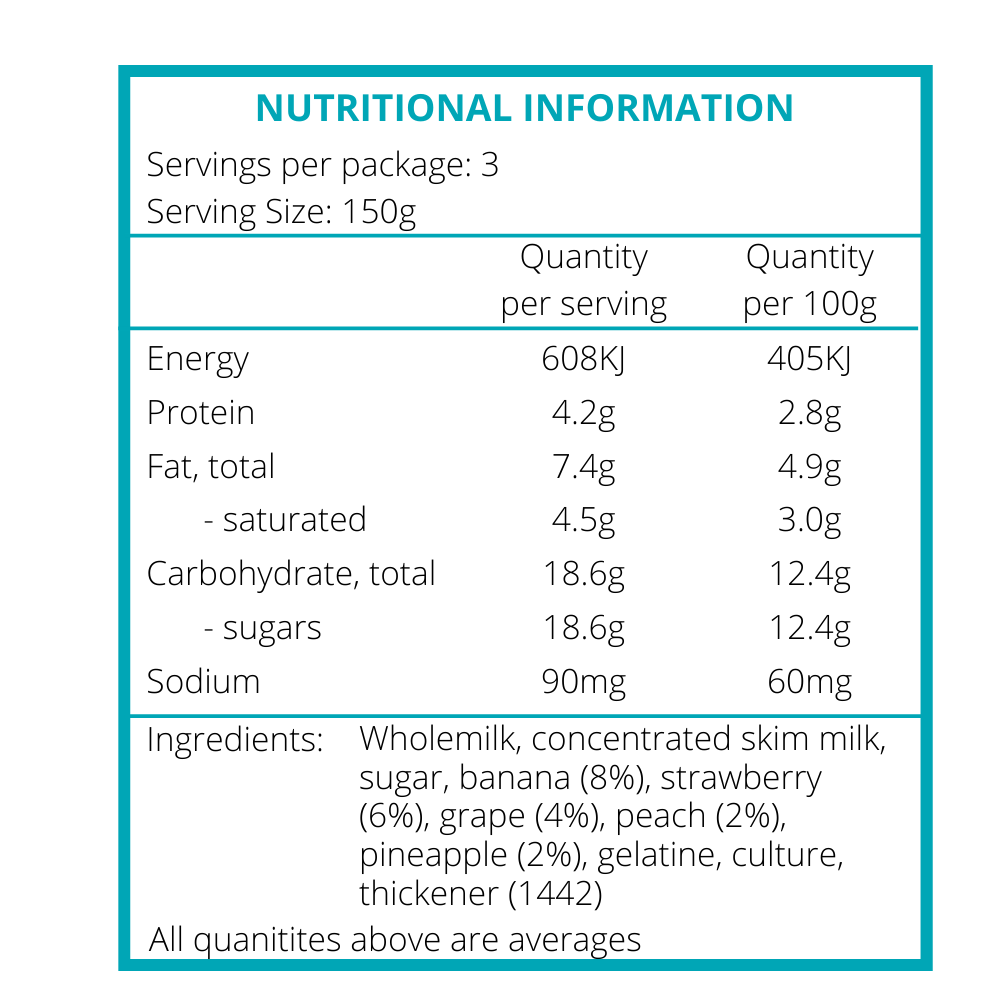
The detrimental effects sugar has on our teeth, and our overall health and wellness has become common knowledge these days.
We try to make conscious decisions to reduce sugar consumption where we can, however, it isn't always easy figuring our how much sugar is in the food we eat, especially when it's often hiding in plain sight, disguised by one of the 50 alternate names.
Foods that are generally considered healthy can be laden with hidden sugars that drive up daily sugar intake, without us knowing.
So when you next find yourself perusing the shopping isles at the grocery store, it's important to know how to identify the hidden sugars lurking in food, in order to make healthier decisions.
The recommended daily sugar limit is 6 teaspoons (24 grams), however the Australian Dental Associations 2020 Oral Health Tracker shows that the average Australian is consuming around 14 teaspoons per day. This could be because people simply aren't ‘sugar savvy’ enough to know how to spot hidden sugars in ingredient lists.
For Dental Health Week (3-9 August) we are uncovering the most common sugary culprits to show you what’s really in the food you eat – and it just might shock you!
Hidden Sugars
The first step in being able to avoid hidden sugars in food is learning how to spot them on an ingredient list. There are more than 50 names for sugar, and below are some of the most common culprits that often go undetected.
- Agave nectar
- Brown sugar
- Cane juice
- Caramel
- Corn syrup
- Dextrose
- Fructose
- Fruit juice
- Fruit juice concentrate
- Glucose
- Golden syrup
- High fructose corn syrup
- Honey
- Maltodextrin
- Maltose
- Maple syrup
- Molasses
- Palm sugar
- Raw sugar
- Rice malt
- Saccharose
- Sucrose
- Syrup
- Treacle
- Icing sugar
- Malt syrup
Nutritional Information Panel
Another great way to better manage sugar intake is to familiarise yourself with the information found on most packaged food and drinks, so you can know what to look out for.
Three things to keep in mind when deciphering the nutritional information panel:
- Use the ‘Quantity per 100g’ column as your benchmark when comparing options and brands, as serving sizes can vary drastically. Aim for food with less than 15g of sugar per 100g. Ideally, try and find foods that contain 5g of added sugar or less.
- The ingredient list is organised from most present to least. This means that the higher up the ingredient shows on the list, the more of it is going to be present in the food. Try to avoid foods where sugar is listed as one of the first five ingredients.
- Tip: Choose food products with the goal in mind to keep your daily added sugar intake to 6 teaspoons or less (24 grams), and avoid products that contain close to, or more than, the recommended daily limit.


Don't be fooled by 'No Added Sugar'
Many products claim to contain no added sugar, and while this might be true, they can still contain sugar, and a lot of it!
Sugar in all its variations fall under two main categories: Natural Sugar and Added Sugar.
Natural sugar is the sugar that is naturally present in unprocessed food and drink, whilst added sugar is added to food during processing and often contain little to no nutritional value.
Plenty of companies use the term 'no added sugar' on their products in order to promote a healthier image, however it's important to keep in mind that natural sugar is still sugar, and as such, should be monitored in our diets.
How sugar affects teeth
The sugar we consume on a daily basis plays a huge role in the development of cavities in our teeth. However sugar alone isn’t what causes cavities, rather, it’s the chain of events that occur in the mouth after sugar has been introduced through food and drink.
When we consume sugar, the bacteria that lives in our mouths use it as energy, releasing harmful acid that pull minerals out of teeth, gradually dissolving the enamel and causing decay.
How to protect your teeth against cavities:
- Brush twice a day with a fluoride toothpaste
- Floss between your teeth daily
- Drink water throughout the day and rinse after meals (especially foods with high amounts of sugar)
- Limit daily sugar consumption to 6 teaspoons (24 grams) per day
- Visit your dentist regularly
To find out more about how sugar can affect your teeth, consult with a dentist or oral hygienist at your nearby Maven Dental practice.